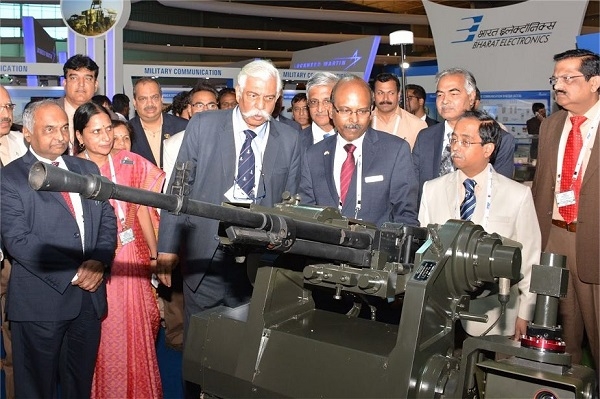Strengthening Indian Military, OFB develops New Remotely Operated Weapon Station
Total Views |
New Delhi, April 2: Following the upsurge in demand for remote weapon stations to strengthen the Indian Armed Forces, the Ordnance Factory Board (OFB) of India has developed a new remotely operated weapon station (ROWS) which is armed with the Russian-designed NSVT 12.7 mm heavy machine gun (HMG).
While developing the unmanned combat station in collaboration with India’s company Bharat Electronics Limited (BEL), it was particularly designed to carry a combat-ready NSVT HMG, which is mounted on a two-axis stabilizer. “The RCWS can be used to engage both ground and aerial targets, with keeping its operator safe from threats,” says the OFB.

The RCWS works in both day and night modes and is equipped with a laser rangefinder along with a traditional sensor suite with a daylight TV camera, and thermal imager. It was reported that it has an automatic target tracker and a remote arming device can be additionally mounted. According to the OFB, the station can be reinforced with an anti-tank missile, machinegun, or automatic grenade launcher. It has already passed the firing tests at sea and it can be used during low-intensity conflicts.
Boosting the 'Make In India' initiative, the RCWS is also developed under it as almost all manufacturers of modern armored vehicles offer their products with unmanned combat stations and India does not appear to be an exception. However, further fielding of the RCWS is not defined. The Indian Army now operates combat vehicles with traditional manned turrets; the Arjun Mk. IA is probably the first Indian vehicle to get a ROWS, but the deliveries of the MBT to the units will start in the early 2020s.
India is also importing marinized unmanned combat stations from Israel since 2016. The Asian country has been negotiating the acquisition of 747 Elbit Systems’ RCWSs armed with 12.7 mm HMGs (probably M2HBs, but Elbit also offers its combat stations with the NSVT machinegun). India was planning to directly import 136 ROWSs and produce the remaining 611 modules in-house.
The RCWS is the first Indian attempt to enter the global market for remotely control weapon systems. In the upcoming year, the market is expected to be boosted by the rapidly growing adoption of remote weapon stations for the naval sectors in developing countries, technologically advanced land warfare systems, and continuous evolution of existing combat platforms.
Though the OFB and BEL are not strong ROWS market players in this market, the RCWS might find its customers, given the station having a well-balanced cost-effectiveness ratio and probably offers almost all modern capabilities at a decent price.

